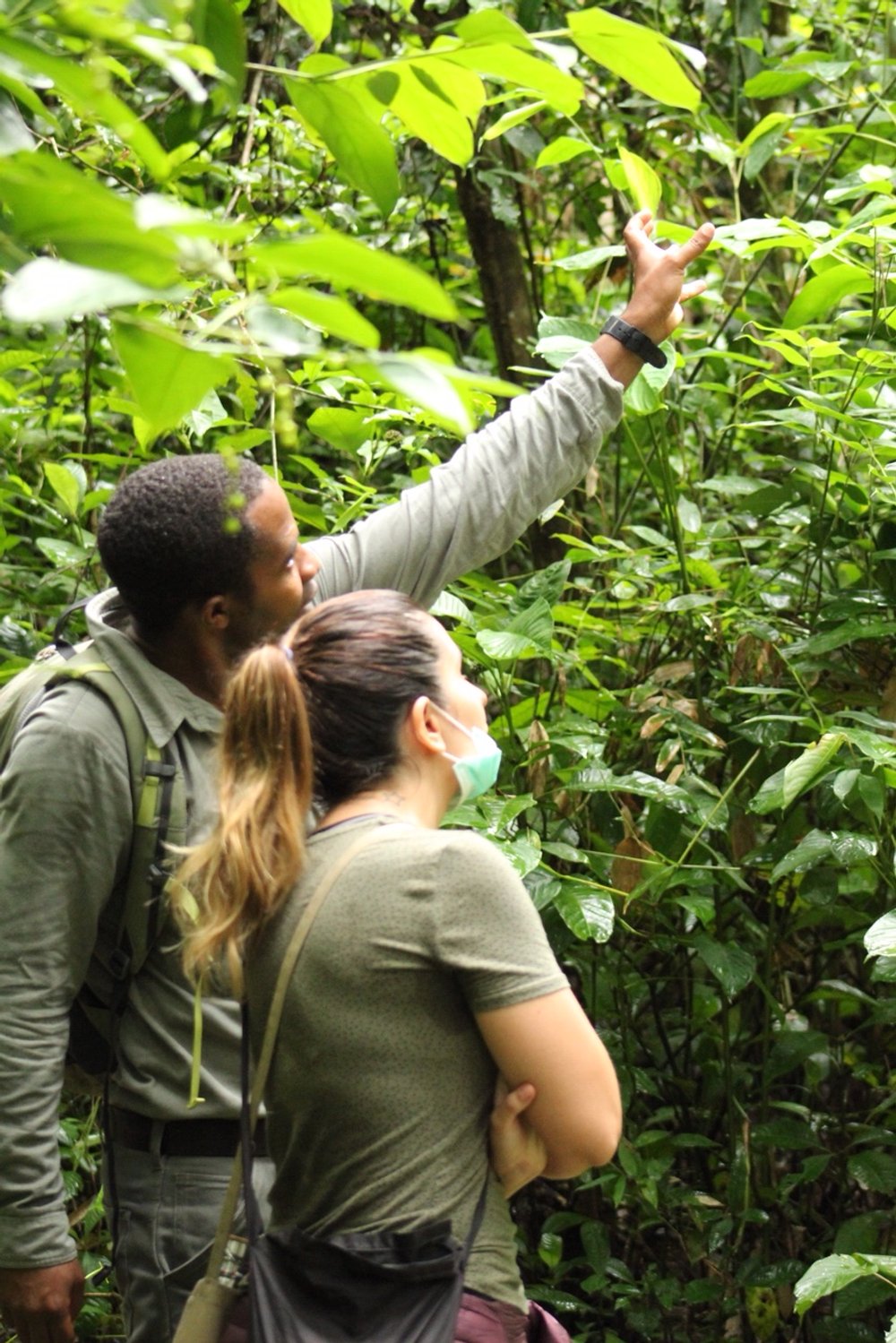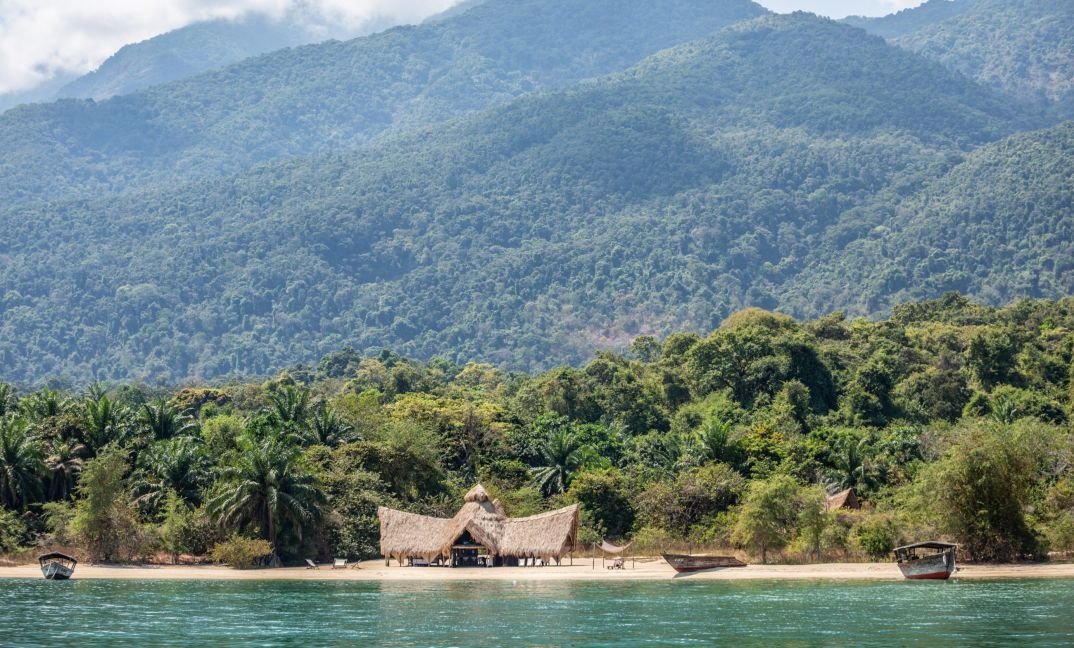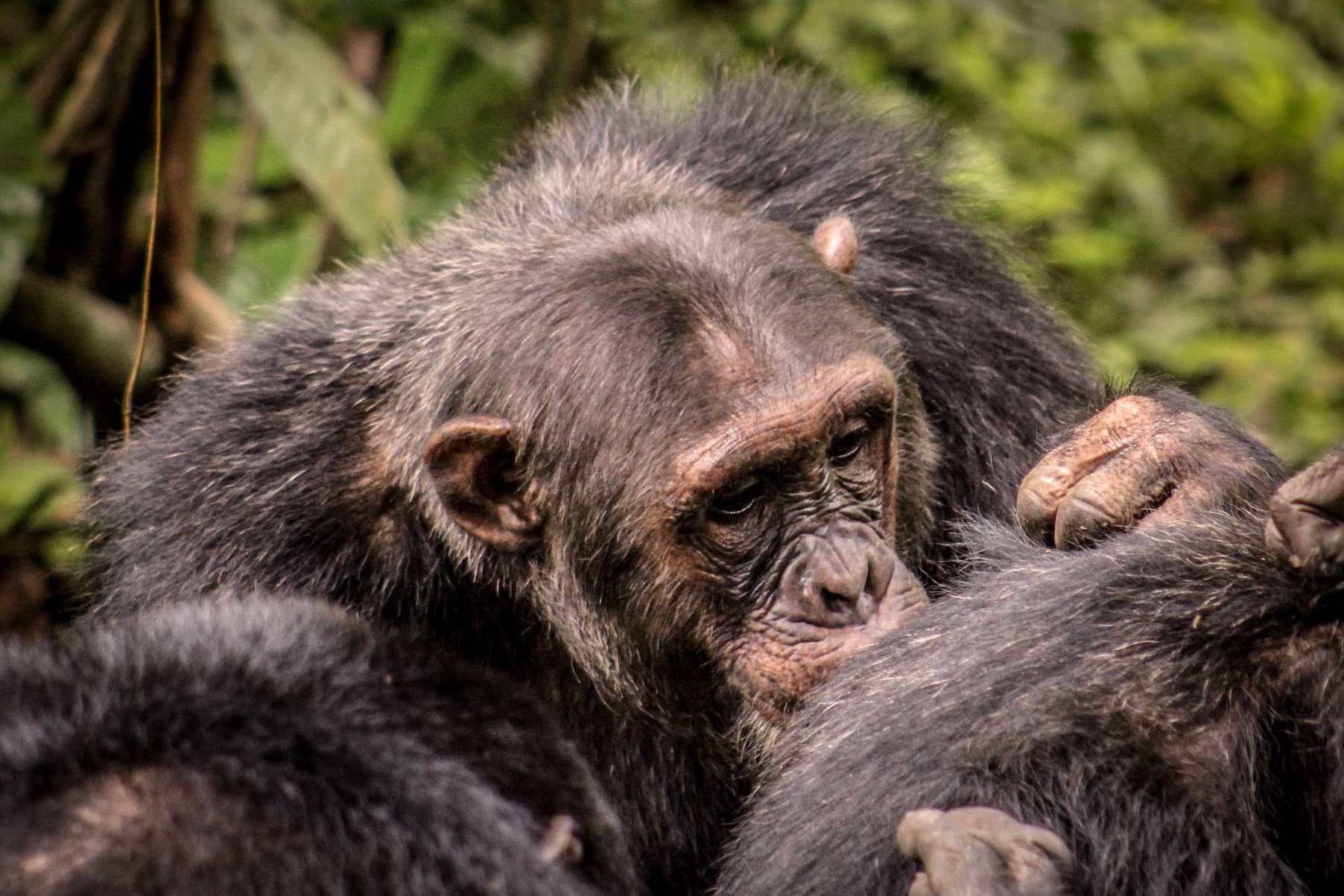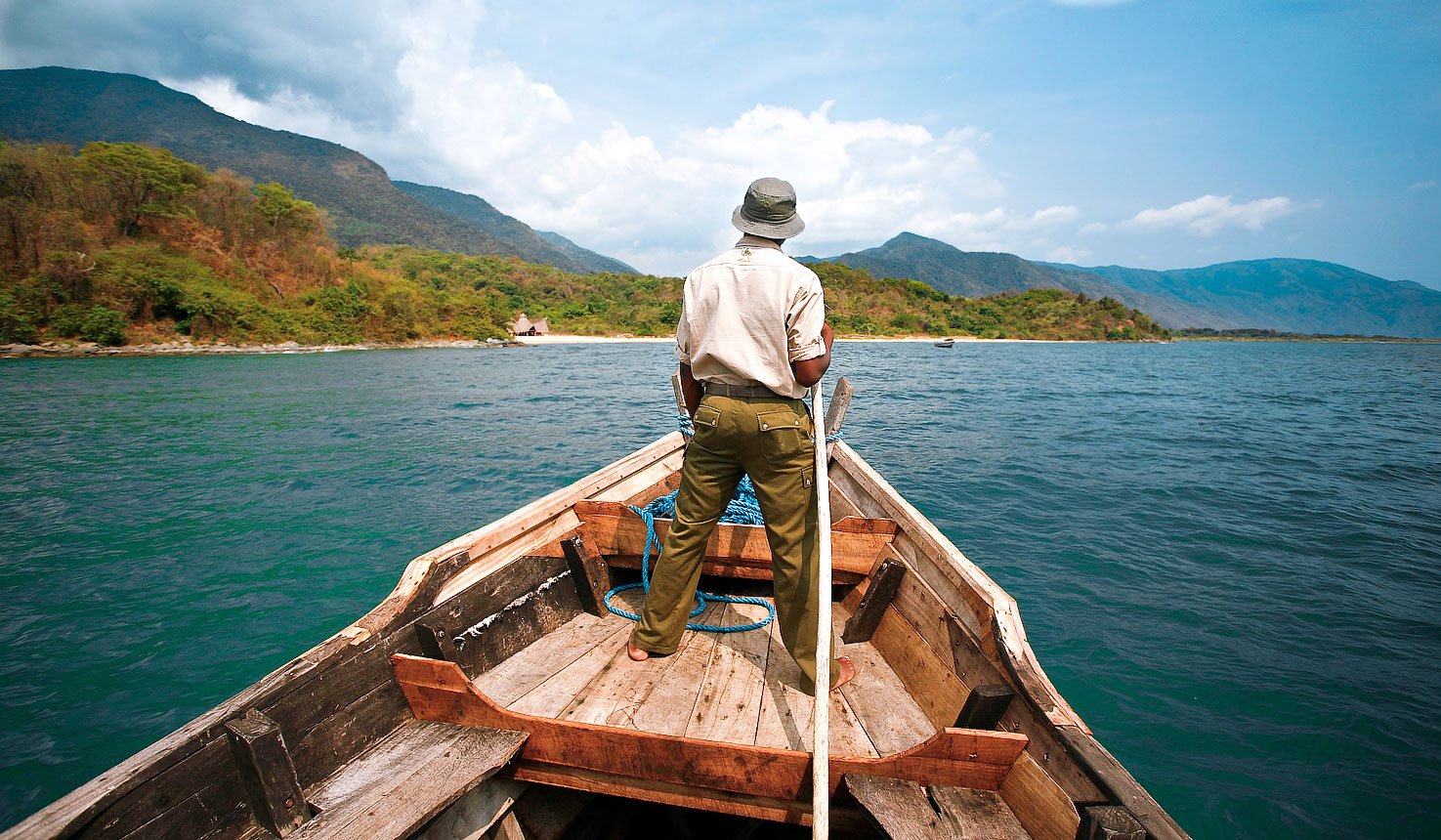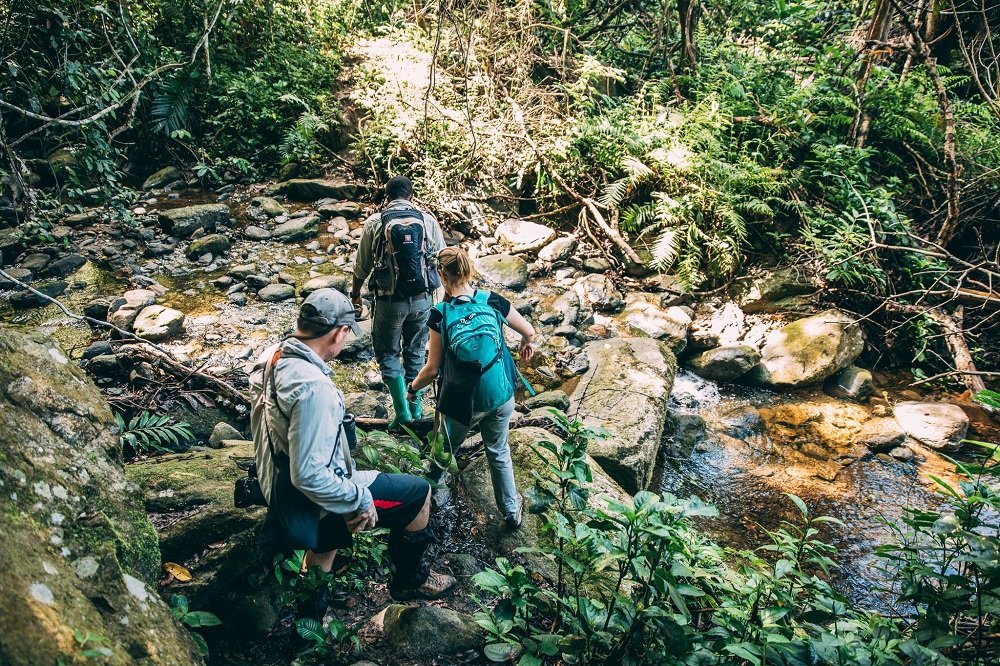Everything You Should Know About Mahale Mountains National Park
Along the eastern shores of Lake Tanganyika, rising into the western slopes of the Mahale Mountains in the Kigoma Region of West Tanzania, the most fortunate of travelers will find a park less frequented by tourists. Mahale Mountains National Park offers stunning lakeshore beaches, lush jungle vegetation, and mountain vistas. Home to one of the largest and last remaining populations of wild chimpanzees in the world, chimp trekking and walking safaris are favorite activities when visiting this extraordinary destination.
Often referred to as "one of the most beautiful parks in Africa," the Mahale Mountains National Park is not to be missed. Accessible only by boat, visitors to the park will enjoy this lush, tropical paradise on foot, visiting chimp communities and marveling at the variety of plantlife and wildlife flourishing along the lush green slopes of the Mahale Mountains.
Let's discover more about what makes Mahale Mountains National Park stand out among the many spectacular parks of Tanzania.
Mahale Mountains National Park
Located in far remote west of Tanzania, with a land area of over 1,650km2, the Holoholo and Batongwe tribes originally inhabited the Mahale Mountains National Park. However, with the establishment of the Mahale Mountains Wildlife Research Center in 1979, the forced relocation of these tribes took place to prepare for the opening of the national park in 1985.
Today, the Mahale Mountains National Park, along with the Gombe Stream National Park just to the north along the shores of Lake Tanganyika, offers a protected environment for Tanzania's densest primate population, including vervet monkeys, red colobus, yellow baboons, and over 1000 chimpanzees, including the Mimikere (M-group) chimps.
This troop of chimps, numbering around 80, dates back to a Japanese research project in the 60s and 70s (when Jane Goodall conducted similar research at Gombe Stream National Park). Habituated as they are to human presence, it is the chimps that visitors are most likely to see while exploring the park. And due to minimal human encroachment on the park ecosystem, the chimpanzee populations are thriving.
We hope you're interested in learning more about Mahale Mountains National Park. We'll fill you in on activities, sights, the history, purpose, and the basics like how to get there and the best time of the year to visit. Let's break down everything you should know about the Mahale Mountains National Park.
Top 5 Things to Do in Mahale Mountains National Park
We'll start off with the main attraction: the chimpanzees.
Chimpanzee Trekking
You can count on chimpanzee trekking in Mahale Mountains National Park to be a fun, adventure-filled experience of a lifetime. Chimpanzees and humans share 98% of their DNA, and it's easy enough to observe this in their mannerisms and watchful, intelligent eyes. Among primates, chimpanzees are one of the most recognizable, with their long arms, short legs, flat, round faces, and big eyes. As mentioned, Mahale Mountains National Park has one of the largest groups of habituated chimps, so visitors can expect relatively easy and frequent sightings. This national park is also unique in that lions and chimpanzees co-exist. And while elephants, buffalo, giraffes, and antelope also move through the park, they live primarily on the eastern slope and are much harder to spot.
Visitors can expect to hike trails that wind up and around rolling hills, becoming rougher in the northwest and southwest sectors of the park. Trek duration will vary depending on chimpanzee locations and the season, with groups restricted to a maximum of six people. And like any other trek in the wilderness, chimpanzee trekking can be strenuous and requires hikers to be in good physical condition. Hikers may need to backtrack or go farther than expected to get their chimpanzee sighting. A good guide will help spot the chimp troops and point out other animals that you might overlook on your own.
Bird-Watching
The Mahale Mountains National Park isn't just for chimp lovers; it's also a favorite spot for the ornithophile! Over 350 bird species, including migratory, water, and forest birds, make Mahale Mountains National Park a popular bird-watching destination.
The best time for bird-watching in Mahale is from November to April, when you'll find resident birds in their breeding plumage and migratory birds traveling from northern Africa and Europe. Most visitors to the park with a knowledgeable eye for birds can count on spotting the Crested Guinea Fowl, Giant Kingfisher, Palm Nut Vulture, and Scaly Francolin, among many others.
Sport Fishing
The best time for sport fishing on Lake Tanganyika is on a nice sunny day when the water is calm. If you're interested in spending a day angling on this deep and ancient lake with over 400 species of fish, you'll need to acquire a fishing permit and license from the Mahale Mountains National Park headquarters. An experienced guide can help you with the details. Sport fishing is only allowed from 7 am to 5 pm daily, and we recommend taking the boat cruise for the best experience.
Hiking in Mahale National Park
Mount Nkungwe is the highest point of the Mahale Mountains at 2462 meters. The hike to the peak and back usually takes an experienced hiker two days. The first night, hikers make camp halfway up, spending the second night at the peak. For the safety of the hikers, armed ranger guides accompany the group.
Another favorite trek is to see the "fishing fire." The fishing boats out on the lake travel with kerosene lamps, and when they light up the lamps at night, it's a beautiful spectacle known as the "fishing fire." It's a magical experience to witness. The best time to take this hike is during the dry season, from June to October. In the rainy season, the slope of the mountain becomes too wet and dangerous to climb.
Cultural Tours
Known for its ancient history and cultural diversity, Tanzania is a favorite for those who seek to learn more about the local village life and the different customs and traditions of the various ethnic tribes living across the country. At Mahale Mountains National Park, visitors can meet the Holoholo (a branch of the Bantu) and Batongwe in nearby villages. Kigoma, the district capital, is also worth a visit for its historical value. Kigoma was a hub for the slave and ivory trade in the 19th century, developing into a transportation hub and railway terminus from Dar-es-Salaam in the 20th century. Interestingly, it was where the reporter, Stanley, found the presumed-lost-in-Africa, Dr. Livingstone, in the late 1800s.
Mahale National Park is also known for kayaking and snorkeling. Lake Tanganyika is home to more than 400 species of fish. Nature walks around the national park are also another popular activity around here.
Best Season To Visit Mahale Mountains National Park
The best time to visit this enchanting national park is during the dry season, from June through October, when temperatures will range between 64 F to 86 F. The best place to view chimpanzees during the dry season is on the lower slopes. The wet season in Mahale goes from November to April and is predictably much more humid. From November to April, however, is the best time for butterfly- and migratory bird-watching.
Compared to other national parks in Tanzania, Mahale Mountains National Park sees far fewer tourists, making this destination much more exclusive, quiet, enchanting and mystical.
How to Reach Mahale Mountains National Park
Yes, Mahale Mountains National Park is comparatively more expensive to travel to than other tourist destinations in Tanzania. Visitors can arrive from either Julius Nyerere International Airport (DAR) in Dar es Salaam or from Kilimanjaro International Airport. Charter flight options are also available from Kigoma, Mwanza and Arusha to the Mahale airstrip.
You can reach the park via boat from the airstrip, which will take about 1.5 hours. If you're traveling by car, you'll need to travel to the nearest villages through Simbo Junction and take a ferry to the park headquarters.
In Conclusion
Your time in Mahale Mountains National Park will be a memory that will stay with you long after you return home. The deep-green majesty of the Mahale western slope, easing down to a white-sand lakeshore, lush flora, and animal life that you feel humbled and honored to behold.
A few days in Mahale Mountains National Park will be among your favorite days as you travel across Tanzania. We at Sababu Safaris can help you create your personal itinerary—an itinerary that can include such out-of-the-way gems as the Mahale Mountains National Park.

